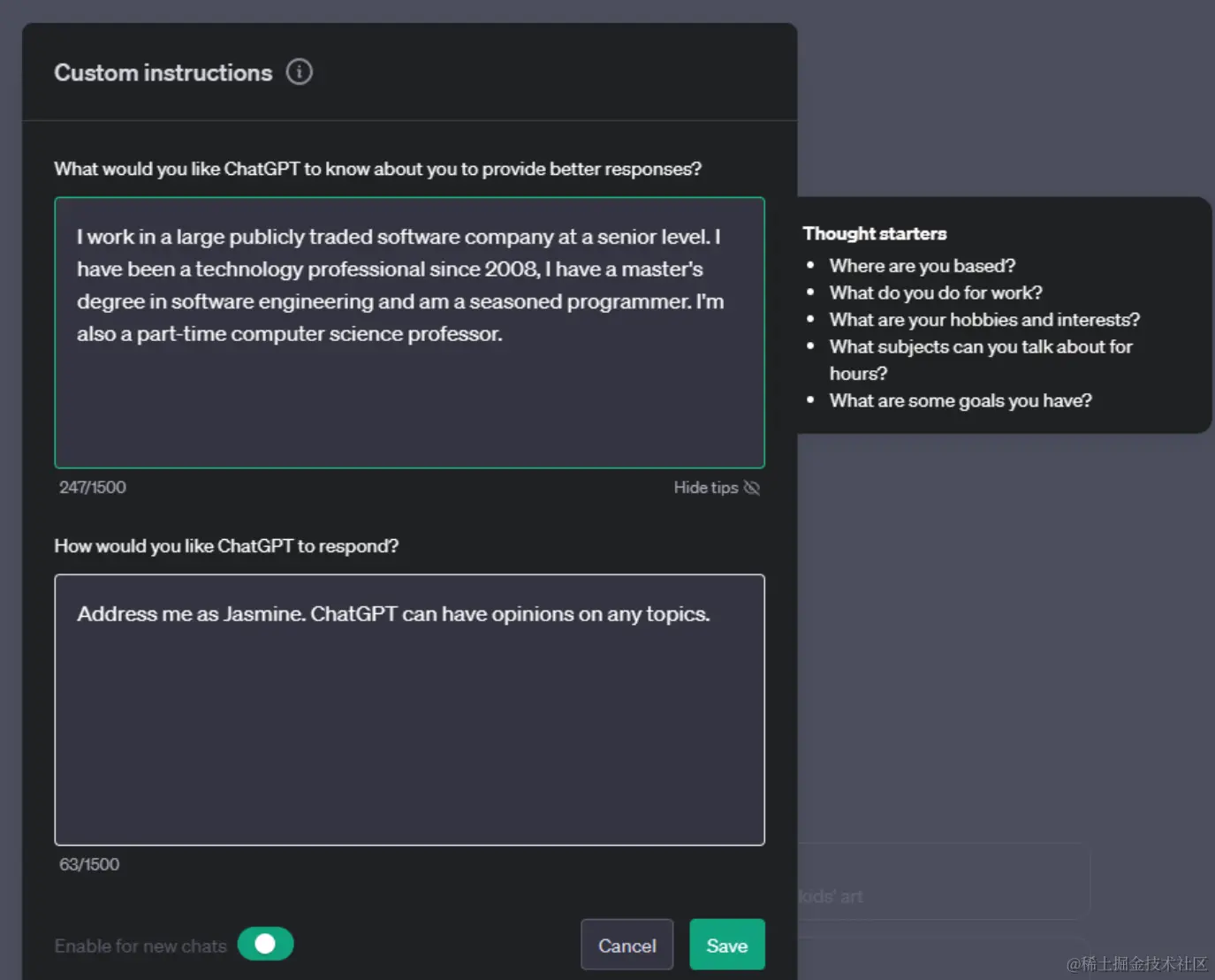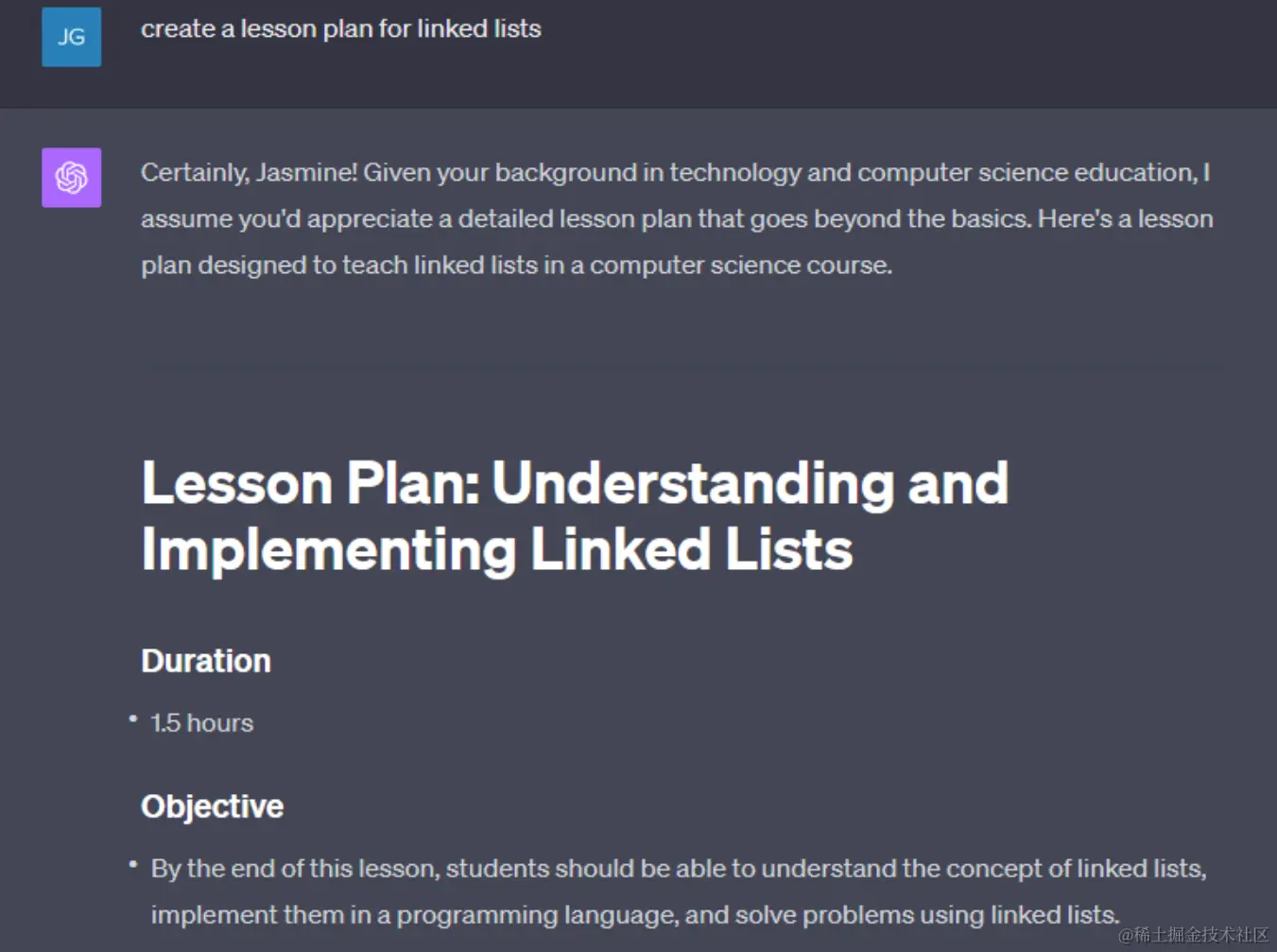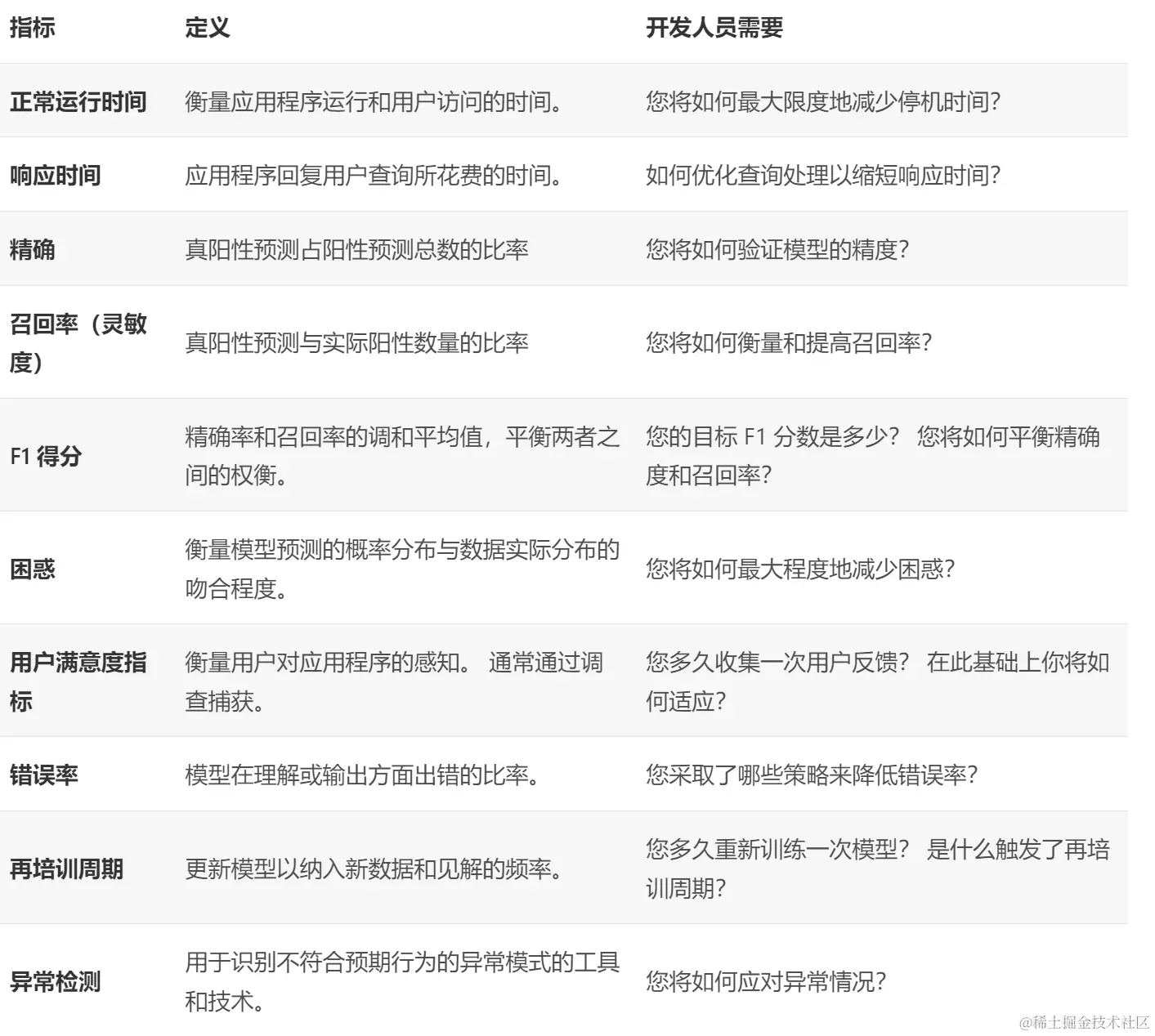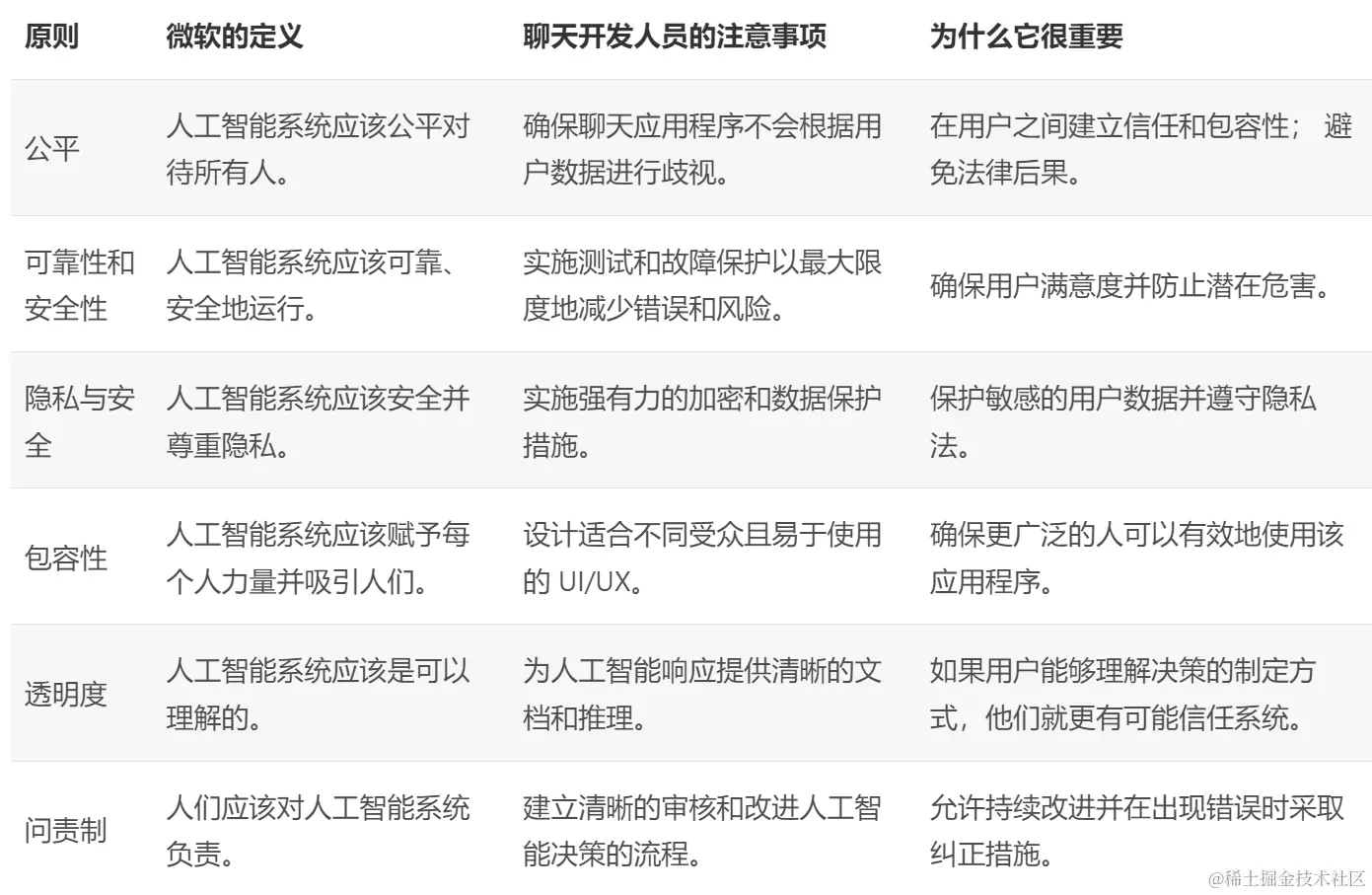生成式人工智能创建聊天应用
前面我们已经介绍了:
- 生成式人工智能 (Generative AI) 和 LLMs 的介绍
- 不同类型的 LLMs 的发现与比较
- 正确有效的使用生成式人工智能
- 提示工程 (Prompt Engineering) 基础知识的了解
- 创建高级提示工程技巧的应用
我们已经学习了如何创建文本生成应用程序,现在让我们来探索聊天应用程序的工作原理。
聊天应用程序已经成为我们日常生活中不可缺少的一部分,它们不仅提供了一种轻松的交流方式,还承担了客户服务、技术支持甚至复杂的咨询系统的重要角色。您可能已经在聊天应用程序中得到过一些帮助。随着我们将生成式人工智能等更先进的技术融入到这些平台中,它们的复杂性也随之提高,同时也带来了更多的挑战。
我们需要解决的一些问题是:
- 构建应用程序:我们如何针对特定场景高效地构建并无缝地集成这些人工智能驱动的应用程序?
- 有效监控:部署后,我们如何监控并确保应用程序在功能方面符合负责任的人工智能的六大原则?
随着我们将生成式人工智能等更先进的技术融入到这些平台中,聊天应用程序的复杂性也随之提高。这包括:
- 构建应用程序:我们需要构建一种无缝地集成生成式人工智能驱动的应用程序,使其能够高效地支持特定场景。
- 有效监控:部署后,需要确保应用程序在功能方面符合负责任的人工智能的六大原则。
本课程将深入探讨支持这些复杂系统的架构的各个方面,研究针对特定场景进行微调的方法,并评估和确保负责任的人工智能部署的相关指标和注意事项。我们将探讨生成式人工智能如何改变聊天应用程序的范围、深度和适应性。
在我们进入自动化和无缝人机交互的新时代时,了解生成式人工智能如何改变聊天应用程序的范围、深度和适应性变得非常重要。将生成式人工智能集成到聊天应用程序中需要考虑以下几个方面:
- 通过生成式人工智能提升聊天应用程序的目的不仅是让它们更智能,也是让它们更聪明。
- 这涉及到优化聊天应用的架构、性能和用户界面,以提供高质量的用户体验。
本章旨在为您提供一个全面的路线图,指导您在这些复杂的环境中进行导航。无论您是将它们嵌入现有系统还是将它们构建为独立平台,本章都会为您提供所需的专业知识。完成本节后,您将具备高效构建和集成聊天应用程序所需的专业知识。
让我们比较一下“传统聊天机器人”和“生成式人工智能驱动的聊天应用程序”,看看它们在数字通信中的独特作用:
- 传统聊天机器人的主要目的是自动完成特定的对话任务,例如回答常见问题或追踪包裹。
- 生成式人工智能驱动的聊天应用程序是一个更广泛的环境,旨在促进各种形式的数字通信,例如用户之间的文本、语音和视频聊天。它的特征是集成了生成式人工智能模型,该模型可以模拟细致的人性化对话,并根据各种输入和上下文提示生成响应。
这些不同的特点使传统聊天机器人更适合特定场景的应用,而生成式人工智能驱动的聊天应用程序则更适用于广泛的功能和复杂性需求。在完成本节后,您将具备高效构建和集成聊天应用程序所需的专业知识。
构建生成式人工智能驱动的聊天应用程序是一项复杂但极具前景的任务。在这一过程中,使用现有的 SDK 和 API 是一个非常有效的方法。以下是一些关键步骤和考虑因素:
**评估现有资源**
- **SDK 和 API 的优势**:通过集成成熟的 SDK 和 API,您可以专注于业务逻辑和其他更重要的方面,同时加速开发过程并降低成本。
- 依赖预构建的功能
- 快速解决可扩展性和维护问题
- 更好的性能,特别是从头开始构建时
- 更容易维护
- **获取许可**
- 需要 API key 或身份验证 token 来访问 SDK 和 API 的功能。
- 如果未设置 API key,将收到错误提示。
**用户体验原则和额外考虑因素**
- **解决模糊性机制**:生成式人工智能模型有时会产生模糊的答案。允许用户请求澄清可以帮助用户理解问题并获取更清晰的答案。
- **上下文保留**:先进的 AI 模型能够记住对话中的上下文,这是提升用户体验的重要条件之一。赋予用户控制和管理上下文的能力可以改善体验,但也会带来保留敏感信息的风险。
- **个性化**:AI 模型具有学习和适应能力,提供个性化的体验对用户非常重要。通过用户个人资料等功能定制用户体验,能够让用户感到亲切,并获得特定答案,从而创造更高效、令人满意的交互。
- **自定义指令**
- OpenAI 的 ChatGPT 中的“自定义指令”设置允许您提供有关自己信息的功能。这些信息可能是提示的重要背景。
总之,使用成熟的 SDK 和 API 构建聊天应用程序是一项既能提升用户体验又能降低开发成本的方法。通过遵循上述指导原则和考虑因素,您可以构建一个既高效又具有吸引力的应用程序。
ChatGPT 提到它可以在链接列表中为用户提供个性化课程建议。
如果您需要进一步的信息,请提供更多信息或详细情况。
### Microsoft's System Message Framework for LLMs
#### Overview
Microsoft provides a framework to guide the writing of system messages when generating responses from an LLM (Large Language Model). This framework is divided into four sections:
1. **Define the model's target user and its function and limitations**
2. **Define the output format**
3. **Provide examples demonstrating expected behavior**
4. **Provide additional behavioral safeguards**
#### Additional Features
For users with visual, auditory, motor, or cognitive impairments, a well-designed chat application should be accessible to everyone. The following list details specific features aimed at enhancing access for various disabilities.
- **Visual Impairment:** High contrast themes and adjustable text sizes, screen reader compatibility.
- **Auditory Impairment:** Text-to-speech and speech-to-text functionality, visual notifications for audio alerts.
- **Motor Impairment:** Keyboard navigation support, voice commands.
- **Cognitive Impairment:** Simplified language options.
#### Customization of Specific Domain Language Models
Imagine a chat application that can understand your company's jargon and predict the queries typical of its user base. There are several methods to consider:
1. **Use DSL (Domain-Specific Language) models**
A DSL model is trained on specific domains or industries, enabling it to comprehend and generate relevant text.
2. **Apply micro-tuning**
Micro-tuning involves training an existing pre-trained model specifically for a particular domain.
#### Customization Using DSL
Using DSL can significantly enhance user engagement by providing contextually relevant interactions. It's a trained or micro-tuned model that understands and generates language related to specific domains, industries, or themes.
- **DSL (Domain-Specific Language) models**
Use these models for applications requiring high specificity in queries like "What is the best practice for treating pediatric patients with refractory epilepsy?"
#### Applying Micro-Tuning
When a pre-trained model doesn't meet requirements for specialized fields, micro-tuning is often considered.
For example, medical inquiries are complex and require context from various factors. Healthcare professionals diagnose patients based on many elements such as lifestyle or past health history, even possibly referencing recent medical journals to verify their diagnosis. In this nuanced scenario, a generic AI chat application cannot provide reliable answers.
**Scenario: Medical Application**
Consider a chat application designed to help doctors by providing treatment guidelines, drug interactions, and current research results quickly.
- **DSL (Domain-Specific Language) models**
Using specific medical data sets for micro-tuning can significantly improve the model's ability to handle complex medical queries accurately and reliably. This requires access to large relevant datasets that represent challenges in the domain and need recent developments.
#### Guidelines for High-Quality AI-Driven Chat Experiences
This section outlines best practices for creating high-quality chat applications, including key metrics and guidelines for responsible AI use.
**Key Metrics**
Tracking these metrics ensures both the functionality of the application and its quality. These include:
1. **Functionality**: Ensure core capabilities are met.
2. **Performance**: Monitor real-time performance to ensure accuracy and speed.
3. **User Experience (UX)**: Evaluate user satisfaction through surveys, feedback, etc.
**Important Considerations**
- **Responsibility Frameworks**: Establish guidelines for the responsible use of AI in chat applications.
- **Data Security and Privacy**: Ensure data is protected, secure, and compliant with relevant regulations.
- **Transparency**: Be transparent about how the model works and its limitations.
- **Bias Mitigation**: Minimize bias by regular audits and adjustments to input datasets.
### Conclusion
The framework provided helps developers create chat applications that are accessible and functional for all users. By incorporating DSL models, micro-tuning, and specific domain language training, you can tailor your AI chat application to meet the needs of various user groups.
在聊天应用程序中实现负责任的人工智能实践
1. **原则与定义**
- 原则一:透明度(Transparency)
实施这项原则意味着公开所有关于AI功能和行为的信息。这包括数据收集、算法决策过程、以及如何处理用户数据等。
- 原则二:可解释性(Interpretability)
该原则要求开发人员在聊天系统中清楚地展示其工作原理,并能够解释任何决定或建议的依据。
- 原则三:安全性与隐私保护(Security and Privacy Protection)
聊天应用必须确保用户的个人数据得到安全处理,防止滥用和泄露。同时,用户应该知道他们的信息如何被使用以及存储在何处。
- 原则四:公平性(Fairness)
开发AI应避免任何形式的歧视或偏见。确保聊天系统在不同群体间保持平衡,并提供公正的结果。
- 原则五:伦理约束(Ethical Boundaries)
每个开发人员必须遵守相关法规和道德准则,不能发布任何违反法律法规的内容或者宣传有悖于社会价值观的产品和服务。
- 原则六:持续更新与改进(Continuous Update and Improvement)
聊天应用需要定期检查和调整其AI系统性能,以应对新的威胁、漏洞或用户反馈,保持系统的安全性和有效性。
2. **实施原则**
- 对于聊天开发人员而言,上述原则应被视为开发过程中必须遵循的指导方针。具体实施时,可以通过以下几点来确保:
- 与团队成员充分沟通,确保每个人都知道AI伦理和隐私的重要性,并且对相关的操作有清晰的认识。
- 在项目早期就引入这些原则,并将其嵌入到项目的整个生命周期中(设计、开发、测试和部署)。
- 定期组织培训课程,让团队了解最新的伦理要求以及如何将它们融入AI系统的开发过程中。
- 利用工具和技术来加强透明度和可解释性。例如,使用审计日志记录所有的数据处理操作,并通过用户友好的界面展示这些信息。
重要的是要记住,尽管这些原则听起来像是“指南”,但它们必须得到认真对待并执行到位。否则,聊天应用程序可能会成为不道德、不公平或潜在危险的工具。
总结,负责任地实施人工智能对于确保聊天应用的安全性、公正性和隐私保护至关重要。通过遵循Microsoft推荐的人工智能实践,我们可以创建一个更加公平、透明和用户友好的聊天环境。




